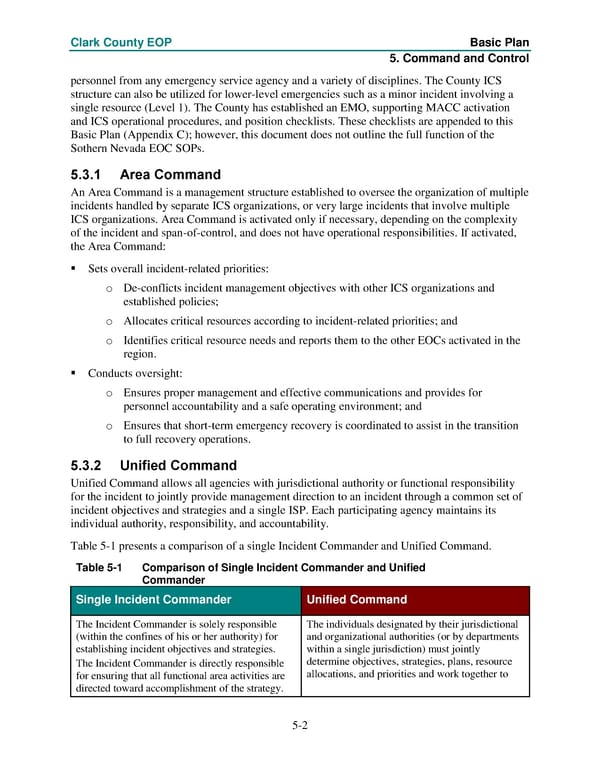Clark County EOP Basic Plan 5. Command and Control personnel from any emergency service agency and a variety of disciplines. The County ICS structure can also be utilized for lower-level emergencies such as a minor incident involving a single resource (Level 1). The County has established an EMO, supporting MACC activation and ICS operational procedures, and position checklists. These checklists are appended to this Basic Plan (Appendix C); however, this document does not outline the full function of the Sothern Nevada EOC SOPs. 5.3.1 Area Command An Area Command is a management structure established to oversee the organization of multiple incidents handled by separate ICS organizations, or very large incidents that involve multiple ICS organizations. Area Command is activated only if necessary, depending on the complexity of the incident and span-of-control, and does not have operational responsibilities. If activated, the Area Command: Sets overall incident-related priorities: o De-conflicts incident management objectives with other ICS organizations and established policies; o Allocates critical resources according to incident-related priorities; and o Identifies critical resource needs and reports them to the other EOCs activated in the region. Conducts oversight: o Ensures proper management and effective communications and provides for personnel accountability and a safe operating environment; and o Ensures that short-term emergency recovery is coordinated to assist in the transition to full recovery operations. 5.3.2 Unified Command Unified Command allows all agencies with jurisdictional authority or functional responsibility for the incident to jointly provide management direction to an incident through a common set of incident objectives and strategies and a single ISP. Each participating agency maintains its individual authority, responsibility, and accountability. Table 5-1 presents a comparison of a single Incident Commander and Unified Command. Table 5-1 Comparison of Single Incident Commander and Unified Commander Single Incident Commander Unified Command The Incident Commander is solely responsible The individuals designated by their jurisdictional (within the confines of his or her authority) for and organizational authorities (or by departments establishing incident objectives and strategies. within a single jurisdiction) must jointly The Incident Commander is directly responsible determine objectives, strategies, plans, resource for ensuring that all functional area activities are allocations, and priorities and work together to directed toward accomplishment of the strategy. 5-2
 Emergency Operations Plan Page 82 Page 84
Emergency Operations Plan Page 82 Page 84